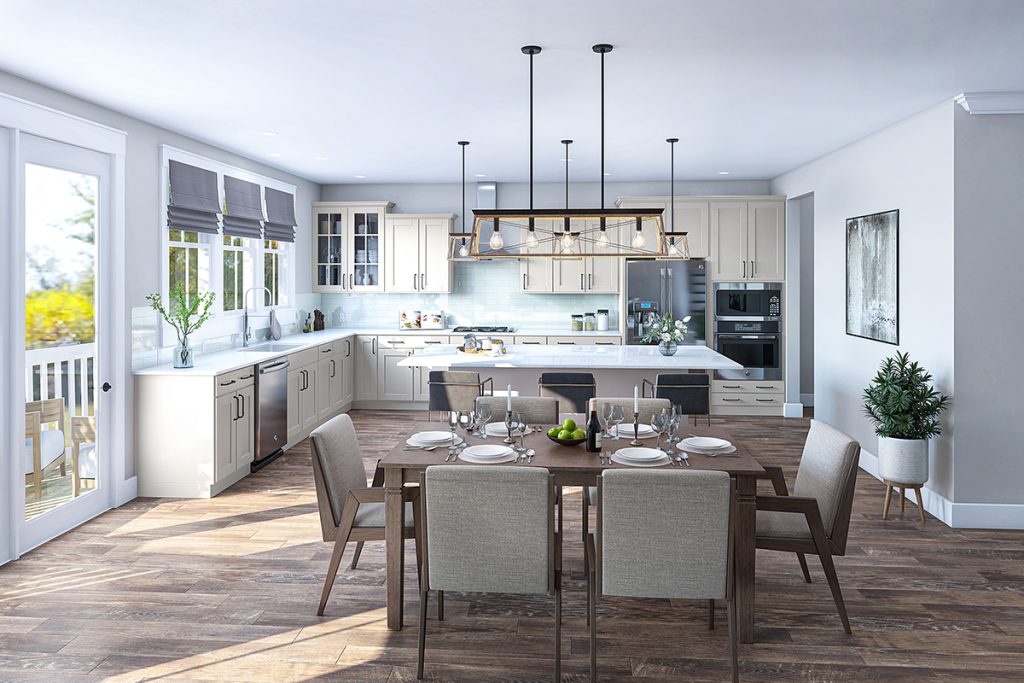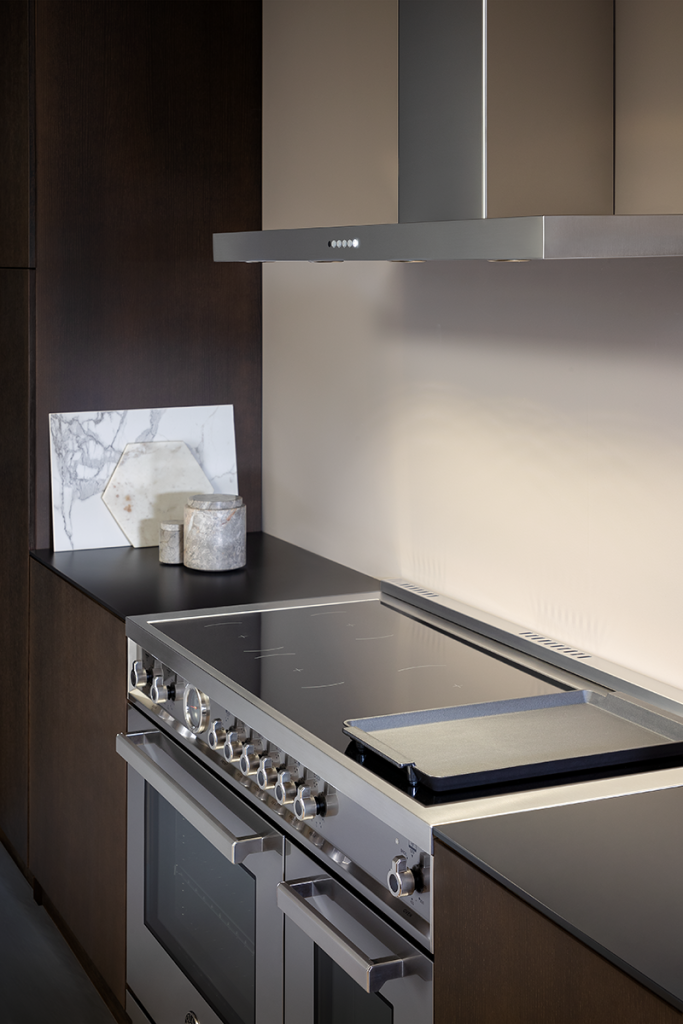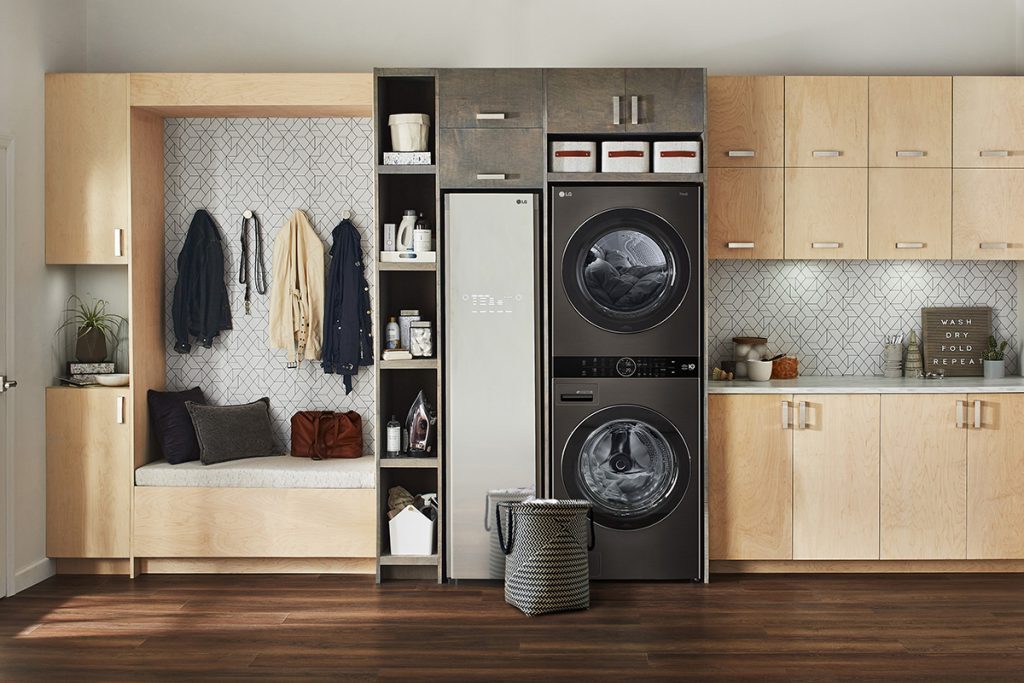Are the years flying by more quickly or does it just seem that way as we get older? Where the heck has 2023 gone? And what were the top trends impacting our industry this year? These pros have generously taken time to share their insights, along with predictions for 2024:
- Caroline Danielson, director of showrooms for Ferguson Bath, Kitchen & Lighting Gallery;
- The Home Improvement Research Institute’s executive director Dave King;
- Builder marketing platform BDX’s head of marketing and product Anne Murray;
- Northern NJ-based interior designer Sharon L. Sherman;
- Jackson, WY-based smart home technology integrator Ian Bryant;
- Senior editor of home improvement platform Houzz, Mitchell Parker.

Photo: K. Hovnanian Homes and BDX
SOCIAL TRENDS
Social trends are often reflected strongly in the choices homeowners make, impacting what designers specify, manufacturers produce and retailers sell. They can help you decide what to focus on in the coming months and years.
Our aging population is one such example. Even if your clients are not yet in their 50s or beyond, they may be working on their ‘forever homes’ or find themselves in a caregiving role to an older family member. “Homeowners increasingly renovate their space for the long run and many are making improvements that allow them to safely remain in their homes into retirement years,” Parker says. “Searches for aging-in-place bathrooms and handicap-accessible bathrooms each more than doubled in the first quarter of 2023 compared with the same period the year prior. Features like handheld showerheads, ADA-compliant bathroom vanities and curbless showers all grew in prominence, as well.”

Photo: Alexandra Crafton © Houzz
Multi-generational living is trending too, Danielson notes. For example, the kids’ bathroom may also serve a grandparent during extended visits. (This is a strong trend for households with overseas relatives.) “There’s a burgeoning market for products designed with universal design principles, offering an opportunity to create elements that are both stylish and accessible to users across the age spectrum,” the retailer adds.
Accessibility is a trend Murray is seeing among new home buyers too. “There is interest in including accessible bathrooms that incorporate grab bars, roll-in showers and raised toilet seats to make daily hygiene tasks safer and more comfortable for individuals with disabilities or limited mobility.”
Sherman sees these features benefiting wellness-focused clients of all ages, noting that grab bars have become far more stylish and popular. “They are not just for aging; they are for weekend warriors too. If you are an athlete, injury prevention and recovery are important details to integrate into all aspects of any design,” she remarks. Sherman’s also seeing steam showers take off, along with chromatherapy and aromatherapy for this clientele.
Concern for the future of the planet is another trend Danielson sees among Ferguson’s customers, with specifiers and homeowners alike seeking eco-friendly materials. “These shifts coincide with a broader focus on wellness.”
Sherman sees this in her practice too: “Natural materials are always a big ask, especially for anti-allergens.” Her homeowner clients are also interested in antimicrobial countertops, setups for growing their own food, and healthy cooking appliances. “I include a steam oven in every kitchen I design now,” the New Jersey designer declares.
Murray is seeing an eco-conscious approach by BDX’s builder clients too, she says. “Two big areas that we see our builders focus on in bathrooms are lighting options and water management solutions. Many of our builders are focusing on nature-meets-luxury, with upscale natural materials and treatments,” she adds.
“Cost effectiveness in the long run and environmental friendliness are the reasons cited most frequently for these choices,” Houzz editor Parker shares. Popular sustainability choices include LEDs, energy-efficient windows and fixtures, and water-saving fixtures.

Photo: Rachel Loewen © Houzz
SPACE PLANNING TRENDS
“If there’s one trend that has catapulted into the mainstream lately it’s the rise of the butler’s pantry or scullery,” observes Parker. “These secondary kitchen spaces help minimize visual and physical clutter in the main kitchen by creating space for pantry items, small appliances and extra countertops.”
Sherman calls this concept “Pantry 2.0.” These expanded spaces can house a freezer, small appliance storage, counters, outlets and sinks, she notes. “People want to open doors and ‘see’ what they have, all in one spot rather than multiple cabinets,” she explains.
She’s also seeing strong interest in pet-friendly areas. These can be feeding spaces designed into cabinetry with built-in water and food bowls, and even faucets. Laundry rooms often have room for grooming and kennels.
“Home shoppers are envisioning a lifestyle where children, families and friends are all in the kitchen enjoying cooking together. The space and layout flexibility in new-construction homes has been important to facilitate that,” Murray says. She’s also seeing more hidden pantries, outdoor connection with large windows, multi-functional spaces for work and play, relax and unwind, and pet-centric zones.
What she sees going away in part or entirely for 2024 are exclusively open-shelving storage and over-the-range microwaves. Can I say good riddance to both?

Photo: George Kovacs, available through Ferguson Bath, Kitchen & Lighting
TECHNOLOGY TRENDS
Smart home features are becoming more popular, prevalent and powerful, especially for luxury projects. “We see upgrades across the board that affect the kitchen space, including full lighting system implementation, adding audio-visual, motorized devices and automated control systems,” Bryant shares. There are new options in hidden wall and ceiling-installed speakers, and a trend toward having a well-ventilated equipment room to run all the smart home systems, rather than just a closet, he notes.
The ultimate luxury is independence. “We are seeing an increase in demand for whole-home battery systems. With the growing issues of an aging power grid, ever-increasing demand from climate change and electrification of personal vehicles, people are wanting to create micro-grids,” the integrator adds. “When you are electrifying your toilets, showers and all the kitchen appliances (with decreasing usage of gas products), it is key to have reliable and consistent power in the home,” he comments. Many designers are wisely partnering with integrators from the start of a project.

Photo: Savant Systems, Inc. in Wellness by Design book’s New Bonus Chapter, © J. Gold, 2023
Bryant is also predicting growth in voice-control technology, especially with emerging artificial intelligence capabilities, plus more smart toilets, more indoor air quality monitoring and more induction and multi-use ovens.
“The proliferation of smart homes has made intelligent faucets and digital showers more common,” Ferguson’s Danielson says. The retail executive also sees increasing interest in voice control, touchless faucets and remote cooking potential. “Smart refrigerators and ovens with integrated technology are also seeing a surge in popularity.”
Her predictions for 2024 also include further integration of artificial intelligence into kitchen and bath design. Predictive replenishment will enhance refrigerators, and cooking algorithms can help home chefs, she anticipates. She also expects to see more human-centric lighting in kitchen and bath spaces and overall LED use tied into voice or app controls.

Photo: Bertazzoni
GOVERNMENT-DRIVEN TRENDS
The government has a role to play in kitchen and bath design, often legislating, regulating or rewarding energy and water conservation and electrification. This has shown up strongly in what I call the “gas stove wars.” Cities and states coast to coast have been banning gas lines to new buildings, making electrified appliances mandatory, in the process spurring strong response from both the appliance and natural gas industries.
The federal government through 2022’s Inflation Reduction Act is offering rebates to switch from gas-fired to electrified stoves, water heaters and other home components. The ensuing noisy public debates are sometimes drowning out the specific points that kitchen and bathroom pros are trying to communicate.
“Local codes and incentives play a significant role in steering consumer preferences and manufacturer offerings toward electrification and energy efficiency,” Danielson says. “This is particularly noticeable in regions focused on carbon emissions reductions, where there are initiatives to phase out natural gas appliances in favor of electric ones.”
Sherman offers an upside: “More people are seeing the light regarding induction cooking. The fear is dissipating, and the benefits and rewards are increasing.” She’s seeing appliance showrooms offer more demonstrations on how to cook with induction and showing why it’s a chef favorite. There are also sleek new integrated options. “More companies are combining forces [on] countertop materials that support built-in cooking elements that only appear when turned on.” (Their ability to work indoors and outdoors is another benefit.)
PRICING TRENDS
“Pricing is the new availability issue of 2023,” HIRI’s King declares. “For two years, contractors simply needed product to install.” Labor shortages are more of an ongoing issue than materials now, he points out, and this trend will continue into the new year as wages rise and immigration policy that can reduce shortages remains undone.

Photo: LG Electronics in Wellness by Design book’s New Bonus Chapter, © J. Gold, 2023
Fewer kitchen and bath projects are happening and in inflation-adjusted terms, have gotten smaller, King comments. “We anticipate more of this for 2024 as high interest rates and high prices plague purchasing.” His research team is predicting negative consumer and professional spending growth for both 2023 and 2024. HIRI is also predicting more DIY projects as consumers become more cost-conscious.
If there’s a silver lining for the industry, it’s that more homeowners are remaining in their current residences, often more by compulsion than choice. “One of the biggest trends we are seeing is that rising interest rates have resulted in more homeowners staying put, so there is lower inventory of resale homes on the market,” BDX’s Murray notes. There’s a related trend of more new home purchases, as builders partner with lenders to create achievable financing programs. Some of these buyers will seek to add upgrades like outdoor kitchens and steam showers in the next few years that they couldn’t afford in their initial purchase.
Danielson noted the dramatic economic- driven changes that have buffeted the industry these past few years. “While there have been upward pressures on costs due to various factors, such as labor shortages and international trade complexities, these challenges have also spurred ingenuity and adaptations that promise long-term efficiencies and sustainability.”

Photo: Samsung Appliances available through Ferguson Bath, Kitchen & Lighting Gallery
She’s cautiously optimistic for 2024. “Ongoing technological advancements are expected to yield some efficient solutions, enriching both the consumer experience and market dynamics,” she remarks.
Last Words
Sherman sees one encouraging trend: “So many luxury items were cost prohibitive, but I am seeing more products available to different budget levels,” she notes. That is indeed a noteworthy trend, pointing to what I call the democratization of design. You can see this trend and others cited in the article up close and personal at the 2024 Kitchen & Bath Industry Show, combined with the International Builders’ Show. It takes place from February 27 to 29 in Las Vegas. Hotels are filling up fast, so don’t wait to book a room if you plan to attend this must-go ‘twofer’ event. ▪
Jamie Gold, CKD, CAPS, MCCWC is an author, wellness design consultant and NKBA Chapter presenter. Her award-winning third book, Wellness by Design (Simon & Schuster, 2020), has a new Bonus Chapter: Lessons for How We Live Now, published October 2023. Learn more about her Wellness Market presentations, books and consulting services at jamiegold.net.

